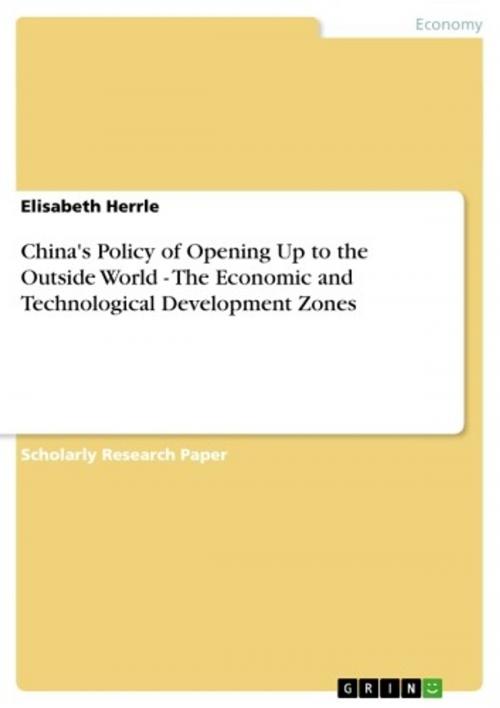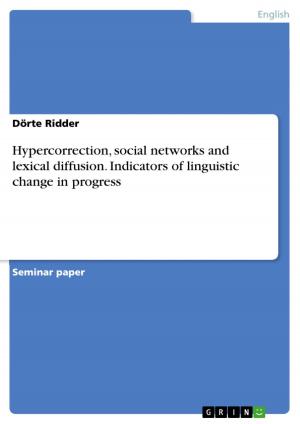China's Policy of Opening Up to the Outside World - The Economic and Technological Development Zones
The Economic and Technological Development Zones
Business & Finance, Economics, Urban & Regional| Author: | Elisabeth Herrle | ISBN: | 9783638400978 |
| Publisher: | GRIN Publishing | Publication: | July 21, 2005 |
| Imprint: | GRIN Publishing | Language: | English |
| Author: | Elisabeth Herrle |
| ISBN: | 9783638400978 |
| Publisher: | GRIN Publishing |
| Publication: | July 21, 2005 |
| Imprint: | GRIN Publishing |
| Language: | English |
Research Paper (undergraduate) from the year 2005 in the subject Economics - Case Scenarios, grade: 2,0, University of Applied Sciences Hof, course: International Trade, 15 entries in the bibliography, language: English, abstract: A Survey of China 1.1. Geography Zhonghua Renmin Gongheguo, the People's Republic of China (PRC) is the world's fourth largest country (after Russia, Canada and the United States) covering an area of about 9.6 million square kilometers and stretching from the temperate to subtropical zones. In size and climate one can compare China with the United States, but its topography is quite different with more mountains and hills and a shorter coastline. These topographic features result in higher transportation costs and in a greater requirement for physical infrastructure construction. Hence, the economic development in China is more challenging than, for instance, in the United States. However, the natural resources China is endowed with are favorable to its development. One cannot only exploit coal, iron ore, or natural gas, but China is also blessed with the world's largest hydropower potential.1 1.2. Population About 1.3 billion people (July 2004 est.) live in the PRC, with a population growth rate of 0.57% (2004 est.). The life expectancy at birth of the total population comes to 71.96 years (male: 70.4 years, female: 73.72 years, 2004 est.). Moreover 90.0% of the Chinese population is literate, meaning that only 9.1% of the population of age 15 and over cannot read and write.2 ----- 1 cp. Démurger et al. (2002), p. 8, CIA (2005), and Table 1 2 cp. CIA (2005), and Table 1
Research Paper (undergraduate) from the year 2005 in the subject Economics - Case Scenarios, grade: 2,0, University of Applied Sciences Hof, course: International Trade, 15 entries in the bibliography, language: English, abstract: A Survey of China 1.1. Geography Zhonghua Renmin Gongheguo, the People's Republic of China (PRC) is the world's fourth largest country (after Russia, Canada and the United States) covering an area of about 9.6 million square kilometers and stretching from the temperate to subtropical zones. In size and climate one can compare China with the United States, but its topography is quite different with more mountains and hills and a shorter coastline. These topographic features result in higher transportation costs and in a greater requirement for physical infrastructure construction. Hence, the economic development in China is more challenging than, for instance, in the United States. However, the natural resources China is endowed with are favorable to its development. One cannot only exploit coal, iron ore, or natural gas, but China is also blessed with the world's largest hydropower potential.1 1.2. Population About 1.3 billion people (July 2004 est.) live in the PRC, with a population growth rate of 0.57% (2004 est.). The life expectancy at birth of the total population comes to 71.96 years (male: 70.4 years, female: 73.72 years, 2004 est.). Moreover 90.0% of the Chinese population is literate, meaning that only 9.1% of the population of age 15 and over cannot read and write.2 ----- 1 cp. Démurger et al. (2002), p. 8, CIA (2005), and Table 1 2 cp. CIA (2005), and Table 1















